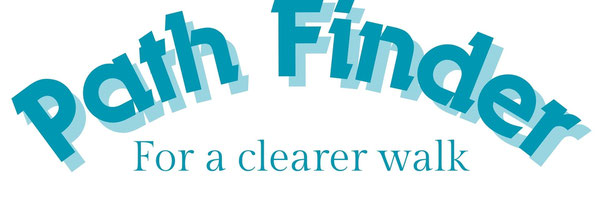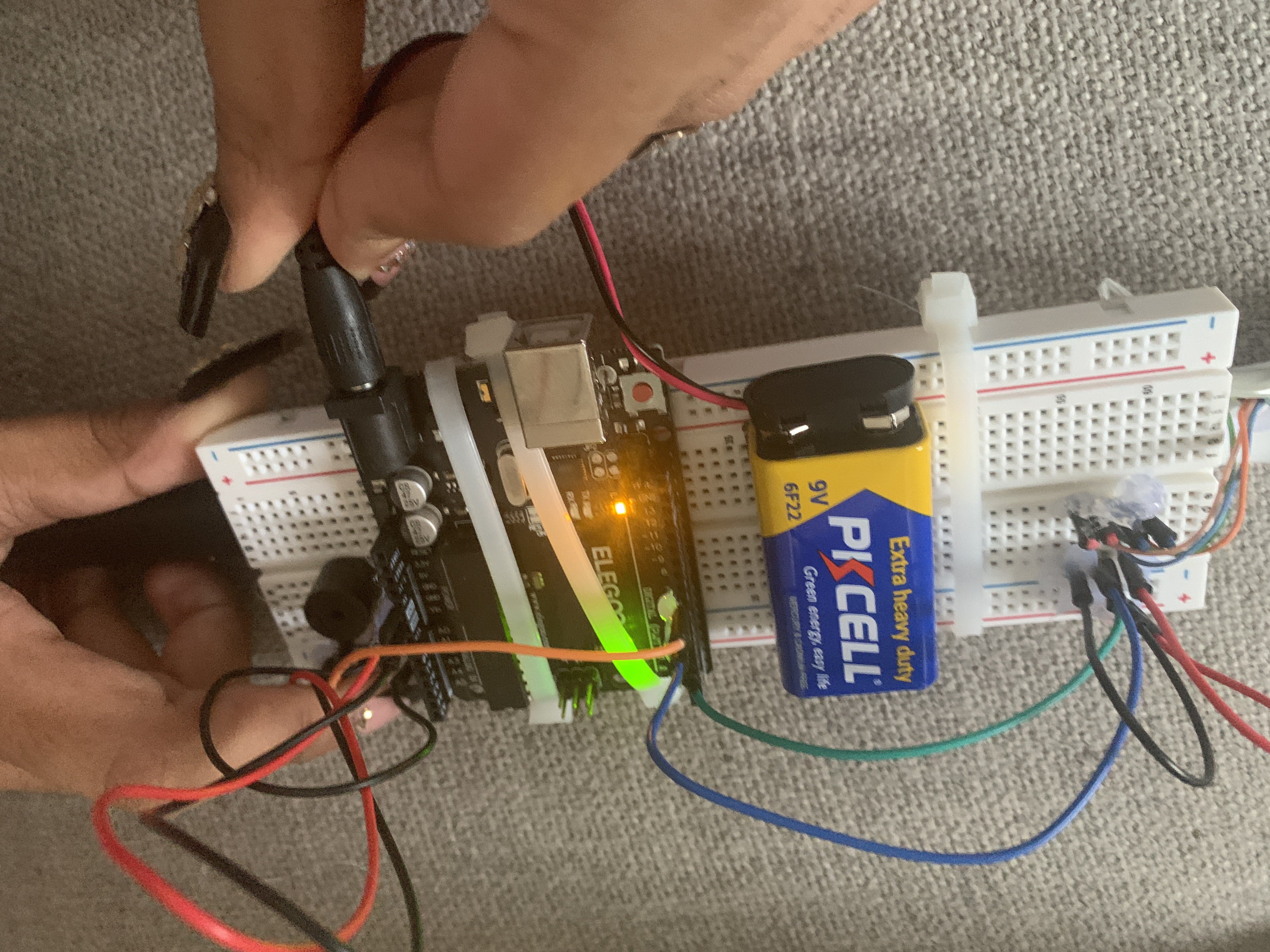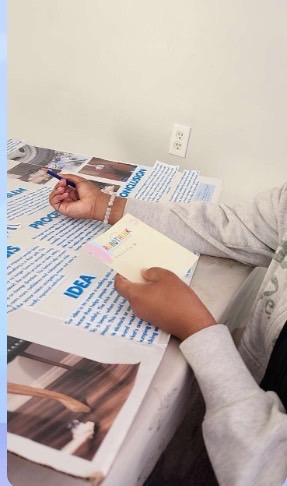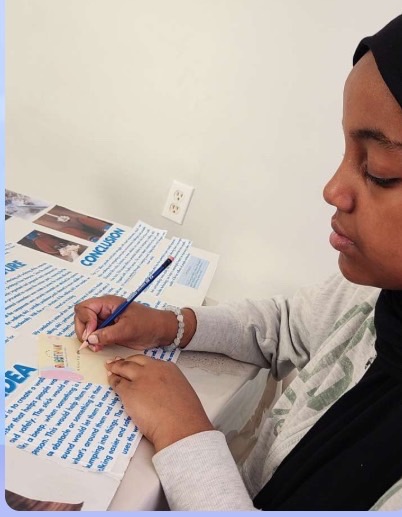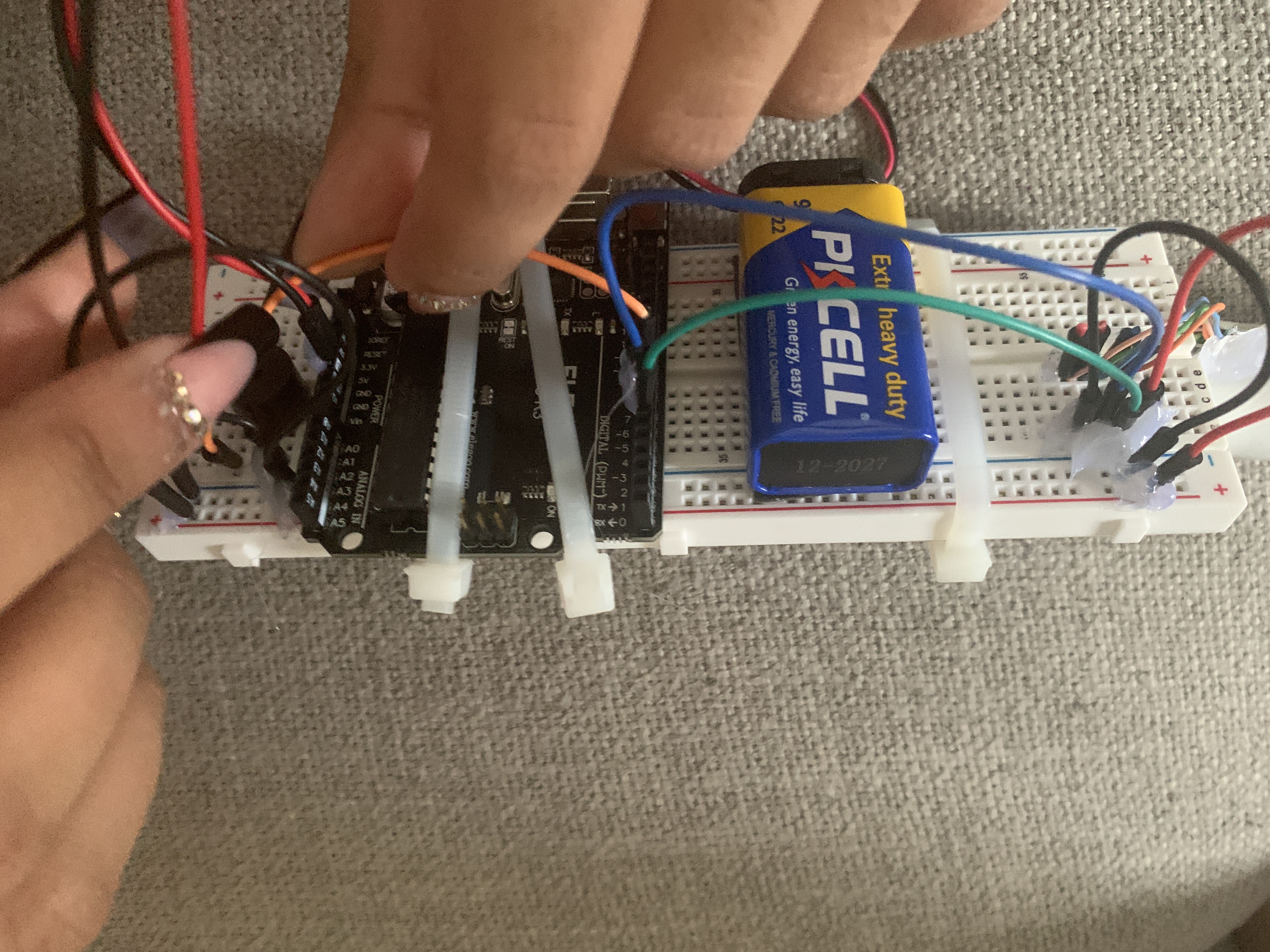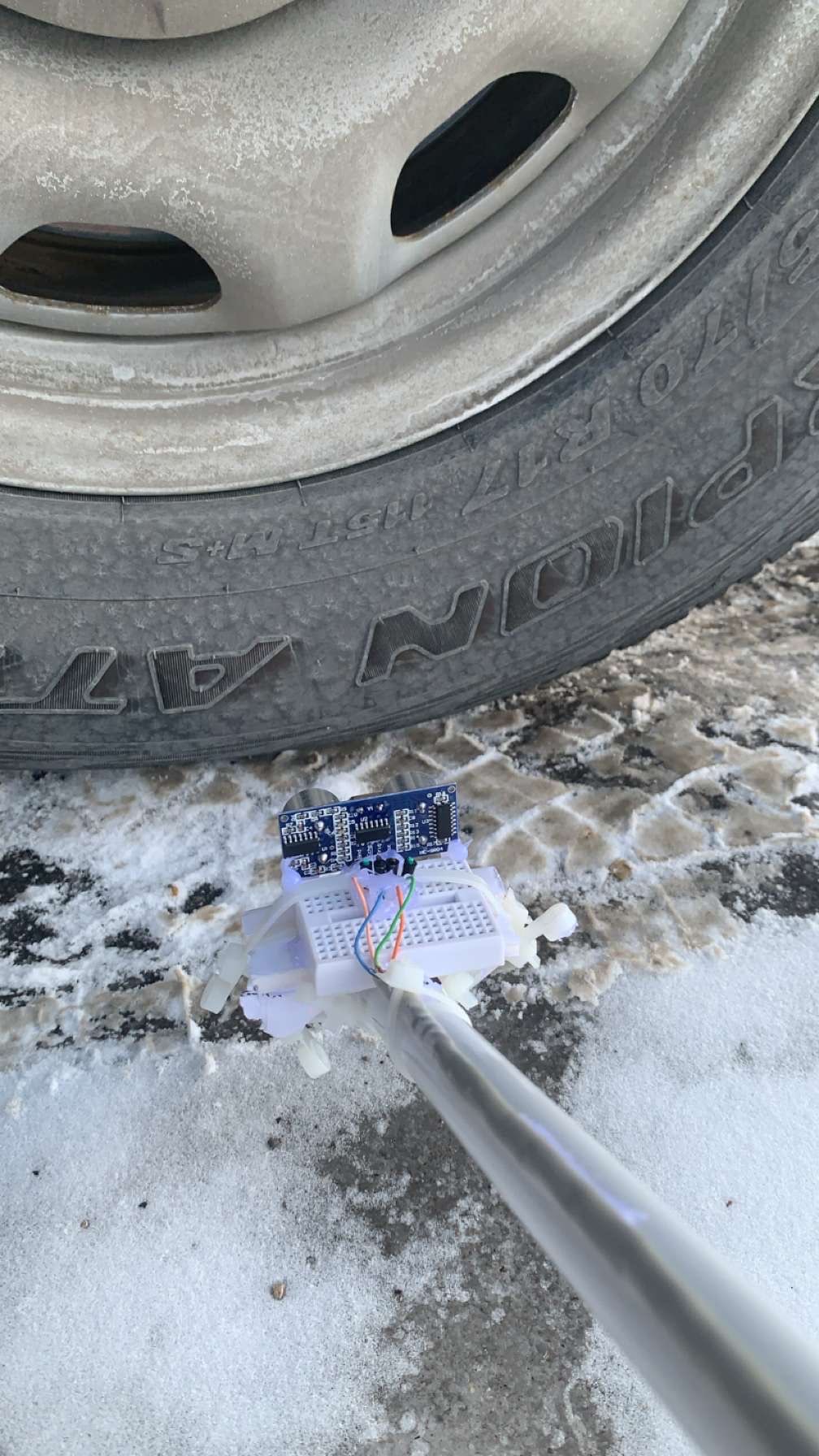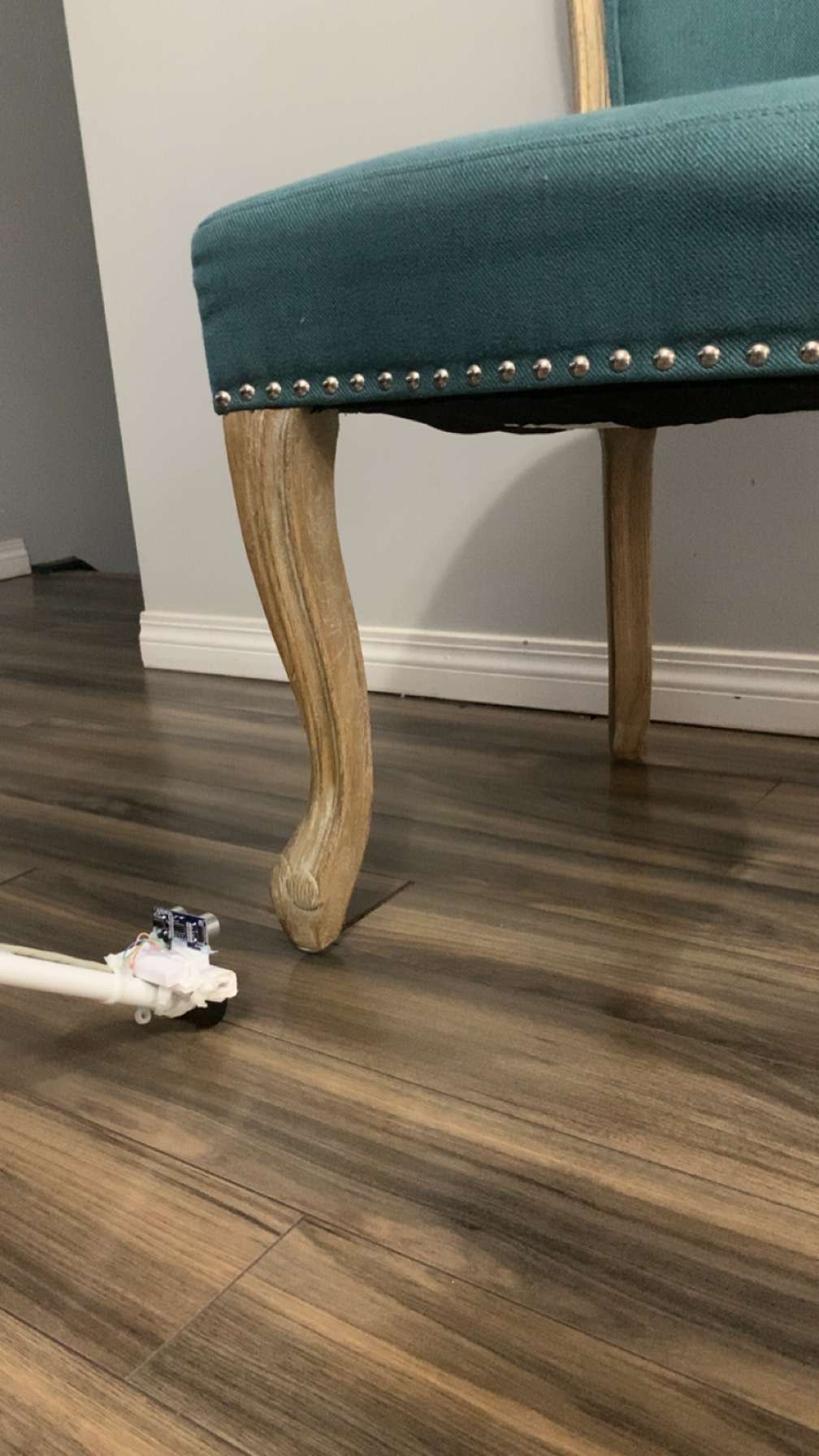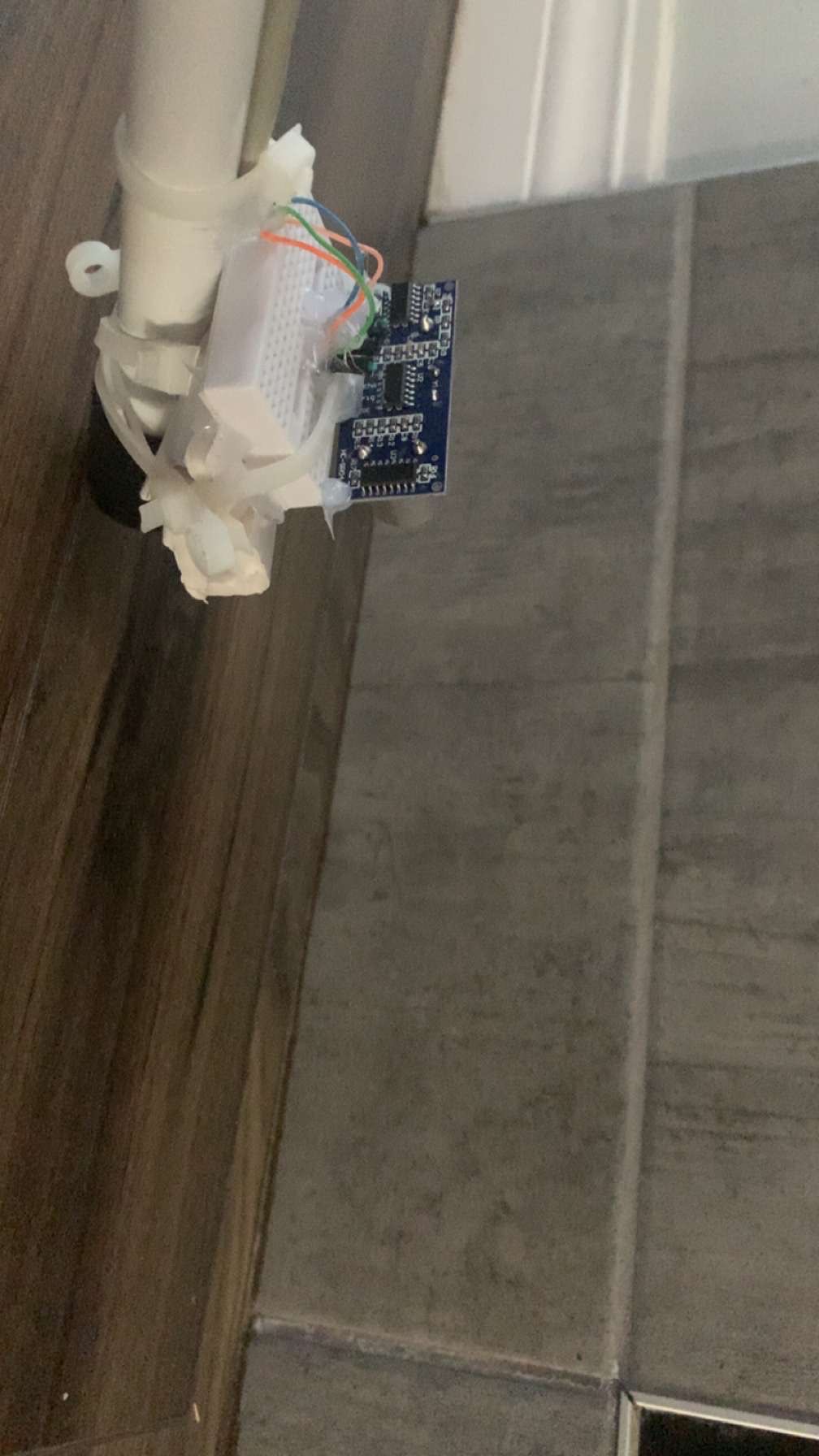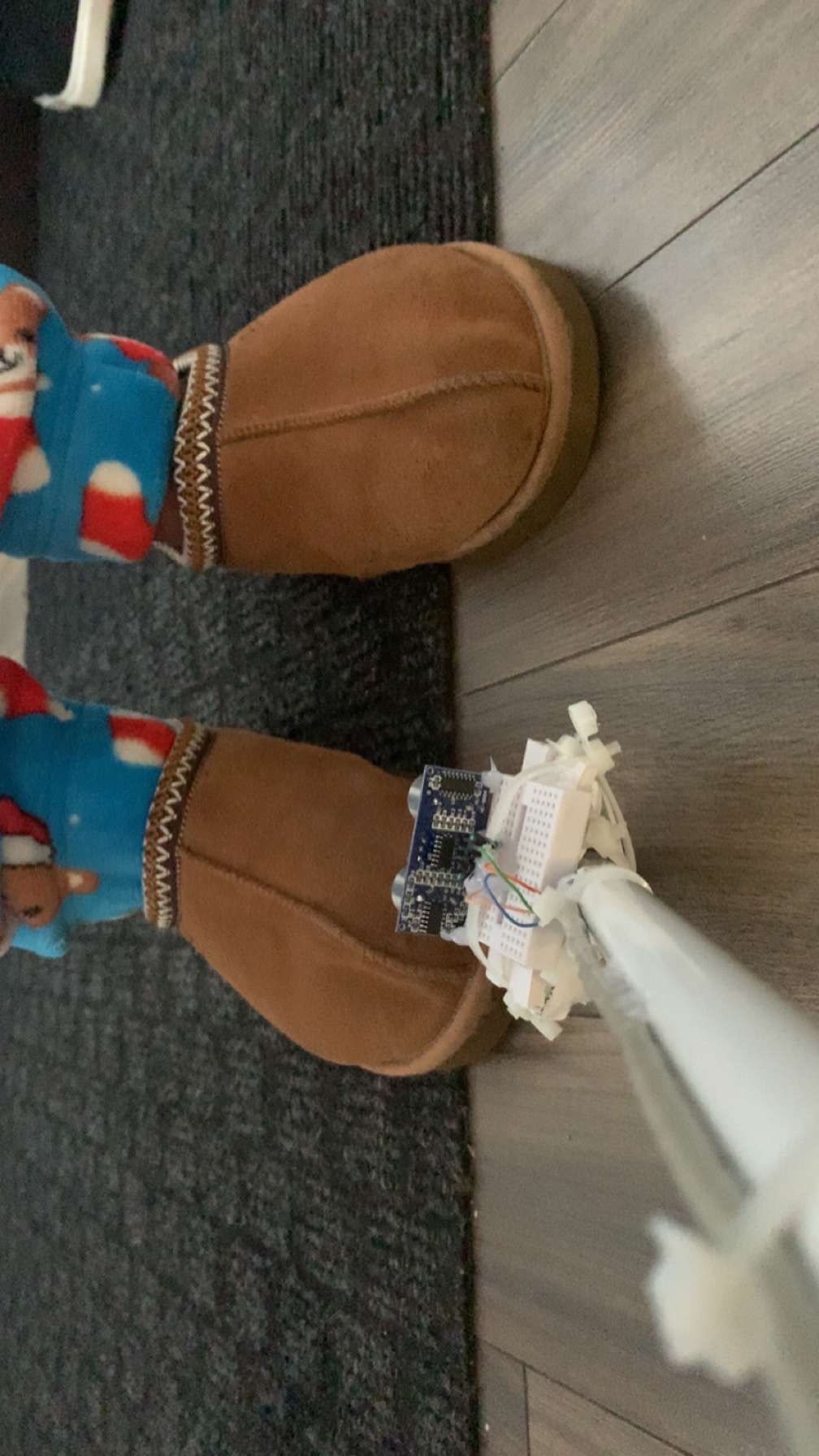Path Finder - For a clearer walk
Grade 8
Presentation
Hypothesis
Our hypothesis is that using our special walking stick will make it safer for people who are visually impaired or blind. This innovative walking stick is designed with a sensor that can detect obstacles in the user’s path, such as bumps in the ground, chairs, walls, or any other objects that might be in the way. The sensor works by scanning the surroundings for any items or barriers that could potentially cause the person to trip, bump into something, or become disoriented. When the sensor detects an obstacle, it sends out a sound warning to alert the user. This sound warning gives the user enough time to adjust their direction or stop before they get too close to the object, reducing the risk of accidents or injuries.
One of the most significant advantages of this walking stick is that it helps individuals who are visually impaired move through their environment with more safety and confidence. Instead of having to rely solely on their sense of touch or other senses, the user will have an additional layer of assistance from the sensor's sound alerts. These alerts can warn them of obstacles ahead, enabling them to change their path or slow down before encountering something that could cause harm. This feature is especially helpful in new or unfamiliar places, where the individual may not be fully aware of what’s ahead of them, such as crowded areas, busy streets, or unfamiliar rooms.
Moreover, the walking stick offers more than just immediate safety benefits. It also plays an important role in helping users build a better understanding of their surroundings over time. By receiving sound alerts when encountering different types of obstacles, visually impaired individuals can begin to recognize patterns and differentiate between various obstacles. This increased awareness of their environment can help them become more independent as they navigate through both familiar and new locations. With practice, they may even be able to predict where certain obstacles might be, which can give them even more confidence in moving around without needing to rely on others for assistance.
In addition to offering physical safety, the walking stick could also have a positive impact on the emotional well-being of visually impaired individuals. Being able to navigate the world with a greater sense of security can lead to increased feelings of independence and self-reliance. Instead of feeling limited by their visual impairment, users will be able to explore their environment with more freedom, knowing they have a reliable tool to help them avoid dangers. This sense of autonomy can boost their overall quality of life, making everyday activities like going to the store, walking in the park, or simply getting to work much easier and less stressful.
In conclusion, we strongly believe that this special walking stick could have a profound and positive impact on the daily lives of visually impaired individuals. By offering a safer way to navigate their surroundings, reducing the chances of accidents, and helping them feel more secure while walking, this device has the potential to empower them to live more independently. It could help them explore the world with greater freedom, confidence, and peace of mind, making everyday activities much easier and more enjoyable. Ultimately, this walking stick can improve their overall quality of life by promoting safety, independence, and a greater sense of personal control.
Research
People who are blind or visually impaired rely on a range of assistive tools and technologies to help them navigate and interact with the world around them. These tools are crucial for enabling independence and improving their quality of life. One of the key tools they use is braille, a system of raised dots that represents letters and words. By feeling these dots with their fingers, blind individuals can read printed text by touch. Braille provides access to books, labels, and other printed material, allowing visually impaired people to gather information just like sighted individuals.
Another important tool for accessing information is screen reader software. This software is installed on computers, smartphones, and other digital devices, and it reads aloud the text displayed on the screen. By converting written text into speech, screen readers allow visually impaired individuals to browse the internet, use apps, and interact with digital content, making technology more accessible to them.
When it comes to mobility, one of the most widely used tools is the white cane. This cane is typically swept back and forth in front of the user, helping them detect obstacles in their path, such as curbs, steps, or objects in the way. The white cane is a simple yet effective tool for safely navigating around potential hazards, and it helps people identify changes in the terrain, such as a bump or a hole in the ground, to avoid accidents.
In addition to the white cane, some people use walking sticks equipped with ultrasonic sensors to further improve their mobility. These advanced walking sticks use sound waves to detect obstacles in the environment. The ultrasonic sensor emits a burst of sound, and when the sound wave hits an object, it bounces back to the sensor. The device measures the time it takes for the sound wave to return, much like how bats use sonar to locate objects. By calculating the time delay, the sensor can detect obstacles in the user’s path. The walking stick then provides feedback, such as a beep, vibration, or other alert, to notify the user about the obstacle. Depending on the design of the sensor, it can detect a range of obstacles, including walls, furniture, or changes in elevation, such as steps or curbs. This feedback helps visually impaired individuals stay aware of their surroundings, navigate more confidently, and avoid accidents.
To better understand the impact of visual impairments, a pie chart can be used to illustrate the percentage of people affected by vision loss. This visual representation provides a clearer picture of how many individuals are living with visual impairments, highlighting the scale of the issue and the need for tools and support to help them lead more independent lives. By showing the proportion of the population affected by vision loss, the chart can also emphasize the importance of making environments, both physical and digital, more accessible to people with vision impairments.
In conclusion, visually impaired individuals use a variety of assistive tools to help them live more independently and safely. Tools like braille, screen readers, white canes, and ultrasonic walking sticks all play an important role in making the world more accessible. By using these devices, people who are blind or visually impaired can navigate their surroundings with confidence, access information, and live more fulfilling lives.
Variables
Dependent Variable: The surface(s) the stick was used on.
Independent Variable: The features of the walking stick and the distance the walking stick was placed at.
Procedure
We began our project by carefully selecting and ordering all the materials we needed to create our walking stick prototype from Amazon, a popular online store. Once the materials arrived at our home, we took the time to organize and prepare each piece, ensuring that everything was ready before we started putting it together.
Next, we moved on to the assembly phase, where we connected the different parts of the walking stick. We paid extra attention to the electrical connections, as they were crucial for the stick to function properly. After confirming that all the pieces were securely connected, we carefully attached each part to the walking stick, ensuring that everything was stable and would work smoothly.
Once the main parts of the walking stick were assembled, we began testing it. We wanted to see how the walking stick would perform in real-life situations, so we allowed different people to try it out. During the tests, we took photos of the users to show how the walking stick was being used in action.
During the tests, we focused on important factors like how stable the walking stick felt, how comfortable it was to use, how well it used power, and how easy it was to handle. We wanted to make sure the walking stick worked well and felt good for the users. After completing the tests, we were pleased to see that the walking stick met all our expectations. It worked reliably, performed the tasks we designed it for, and showed smooth operation. With these positive results, we were confident that it was ready for everyday use and could be a helpful tool for anyone who needed assistance while walking. Overall, the entire experience was rewarding and reinforced the importance of thoughtful design and thorough testing.
Observations
Our research findings indicate that our innovative walking stick is capable of detecting a wide variety of surfaces, including but not limited to car wheels, chairs, walls, and even the legs or feet of individuals in proximity. This capability is made possible through the integration of sophisticated sensors that utilize sound wave technology. These sensors emit sound waves that bounce off surrounding surfaces, allowing for real-time analysis and identification of obstacles in the walker’s environment.
However, during our testing, we identified a significant limitation regarding detecting corners, specifically where two walls intersect. The unique geometry of corners results in a reduced surface area with which sound waves can interact. Consequently, the sound waves emitted by the sensors may not effectively bounce back, leading to a failure to detect the presence of these corners. This inability to recognize sharp angles presents a potential hazard for users, as it could lead to unintended collisions.
To address this challenge, we believe that enhancing the walking stick’s capacity to navigate such tight spaces will require further refinement of our detection technology. This could involve exploring alternative sensor configurations or incorporating additional types of sensors that may improve surface interaction in more confined areas. Developing a solution to this limitation is paramount to ensuring the safety and functionality of the walking stick for all users.
Analysis
The sensor in the walking stick is a valuable tool for people who have difficulty seeing. It works by sending out a sound whenever it detects an obstacle in the user's path, such as a wall, curb, or any other object. This feature makes walking much safer because users don’t have to constantly swing the stick around to find out what is in front of them. Instead, the sensor alerts them with a sound whenever there’s something they need to avoid.
When the sensor detects an object, it makes a noise to warn the user that they need to stop or change direction. This important feature helps prevent accidents that could happen if someone unknowingly walks into something. As a result, users can walk with more confidence and feel more independent, knowing they have a reliable way to avoid obstacles.
With the help of this sensor, moving through different places—whether it’s busy streets, parks, or even at home—becomes much easier. The device gives visually impaired individuals greater assurance as they walk, knowing they have an extra layer of protection from unexpected obstacles. Overall, this walking stick sensor plays a crucial role in improving safety and independence for those with visual impairments, helping them navigate their environment more confidently.
Conclusion
Around 2.2 billion people worldwide experience challenges due to visual impairments, which can make it difficult and unsafe for them to walk and navigate everyday spaces. These individuals often encounter obstacles like curbs, furniture, or even cars, which can pose serious risks to their safety. To address this issue, a new project is being developed that focuses on creating a special walking stick. This innovative walking stick includes a built-in sensor that can detect obstacles in the user’s path.
When the sensor detects an obstacle, it emits a warning sound, such as a beep, alerting the user to potential dangers. This feature can help those with vision loss avoid obstacles and move around more safely. By using this smart walking stick, visually impaired individuals can gain more independence and confidence as they navigate their surroundings.
The goal of this project is to demonstrate how simple, easily accessible technology can make a significant difference in improving safety and the overall quality of life for millions of people. With better safety measures in place, those with visual impairments can enjoy greater freedom and take part more fully in their communities. Ultimately, this walking stick has the potential to transform how visually impaired individuals experience the world around them, making walking a safer and more enjoyable activity.
Application
We developed our innovative walking stick based on discussions with our teachers. We want to present this product on Shark Tank to seek investment and support.
Our walking stick will have advanced features, including a mobile app to improve user safety and mobility. The app will offer real-time navigation help, guiding users in unfamiliar places. It will also include an important safety feature that alerts caregivers if the user falls, ensuring they get help quickly.
Additionally, the app will let users customize settings, such as the volume and frequency of the beeps from the walking stick. This makes it suitable for people with different hearing abilities.
As the need for assistive technology grows, our product is ready for strong market interest. It can enhance users' quality of life and give their families peace of mind. We believe investors will be drawn to its potential for social impact and profitability. Our walking stick combines safety, convenience, and personalization, making it a great choice in the assistive technology market.
Sources Of Error
Our walking stick sometimes has difficulty detecting obstacles when it comes to corners. Many people don’t realize that this can cause problems. The way the stick works is by using sound waves to help identify objects that are in the way. When the stick is in a straight line, the sound waves can bounce off nearby objects and return to the sensor very easily. This allows the stick to "see" what is in its path and help the user avoid bumping into things.
However, when it reaches a corner, things change. At a corner, the shape of the wall makes a big difference. The corner itself has much less surface area than a flat wall. Because of this smaller surface area, the sound waves do not bounce back as effectively. In fact, they might not bounce back at all! This creates a situation where the stick struggles to recognize that there is a corner or any object there. It’s like being in a room with very few walls—you can’t hear the sound bouncing around, so you can’t tell where things are.
This issue can be quite frustrating, especially if the user depends on the stick to navigate safely. Imagine walking down a quiet street and suddenly approaching a building that juts out. If the stick cannot tell that there is something in the way, it could lead to a collision. We believe that the corner of the wall, with its unusual shape, makes it hard for the stick's technology to function properly.
To illustrate further, think about trying to speak in a room with very few surfaces. If someone were in that room, it would be difficult for them to hear you because the sound would not bounce back in a way that makes it clear where you are. Our walking stick faces a similar challenge at corners. Without proper reflection of the sound waves, it simply can’t detect that there might be something there. This is why our walking stick may not work as well when approaching corners, and it's something we are actively looking to improve. We want to help make navigation easier and safer for our users, ensuring everyone can move around confidently, even near tricky spots like corners.
Acknowledgement
We want to take a moment to thank our parents for all their help with our project. They guided us through coding and proofreading, and we really appreciate their time and effort in supporting us.
We also want to thank our science teacher, Mrs. Kale. Her support and motivation have made a big difference in our learning, and we are very grateful for her help.
Additionally, we would like to recognize our principal Ms.Ryan and assistant principal Ms. Lizzot, for their helpful feedback and encouragement. They helped us think deeply about our project and pushed us to do our best.
We also want to thank the other teachers who judged our project. Their suggestions and support have inspired us to improve and grow. We are thankful for the chance to be part of the Calgary Youth Science Fair (CYSF) and appreciate everything they did to make this event happen.
A big thank you to Hermela, our best friend, for always being there, helping us, and supporting us since day one! Thank you all for being such an important part of our journey!
Lastly, we want to thank our friends who helped us along the way. Their cheers and support during the judging process boosted our confidence and kept us focused. We feel lucky to have them by our side, and their friendship made this experience even more special. Thank you all for being such an important part of our journey.

